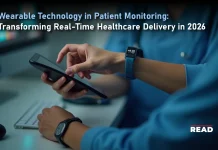Data processing is a very difficult, time-consuming, yet essential process in today’s digital age. To make this process easy without any delays or bottlenecks, edge computing devices play a special role backstage. These innovative devices leverage the computing power at the edge of the network to reduce latency, improve response times, and enable real-time analysis.
So, let’s take a detailed look at these remarkable devices that are changing the way we connect, interact, and run businesses in the digital world.
Edge Computing Devices: What Are They Exactly?
Edge computing devices are specialized physical hardware devices that are mainly connected to an edge computing platform and serve to collect and transmit data. These devices play a crucial role in edge computing, a distributed information technology architecture that processes client data at the network’s periphery. These devices are designed to perform in various situations and deliver computing resources for optimizing industrial operations. They enable faster data processing, reduce latency, and allow for real-time action-led results.
Why are Edge Computing Devices Important?
Edge computing devices are vital in the modern digital realm for several reasons. They allow real-time processing and analysis of data in the network, which reduces latency and ensures faster response times. This is mainly essential for time-sensitive applications such as IoT, autonomous vehicles, and critical industrial processes
Edge computing-equipped devices also optimize bandwidth usage by filtering and processing data locally, minimizing the need for transmitting large amounts of data to the cloud. Additionally, these devices improve the security of data by implementing encryption and hardened edge deployments. According to Extrapolate, the edge computing devices market is expected to be valued at $43.03 billion by 2030, empowering efficient, secure, and responsive computing at the edge.
Types of Edge Computing Devices
Devices equipped with edge computing technology are categorized into several types, such as:
- Smart cameras: These devices are used to capture and process video data in real-time for applications like surveillance, object recognition, and video analytics.
- uCPE equipment: uCPE stands for Universal Customer Premises Equipment. They provide network services at the customer location. These services include routing, security, and virtualization.
- IoT sensors: Edge computing IoT devices are used to collect data from various sources, such as environmental sensors, industrial equipment, and wearable devices.
- Servers and processors: These devices are useful for processing and analyzing data at the edge computing data center.
How are Edge Computing Devices Boosting Business Growth?
Below are three real-world examples of companies that have leveraged edge computing technology and featured devices to grow their businesses:
1. Zizo
Zizo, a start-up company, has greatly benefited by offering an edge platform for analytics and APIs. It has gained several new clients, like British American Tobacco and Safran Landing Systems, by providing its edge solution to support them. The company has been recognized for the development and deployment of connected experimental devices. This approach has reduced development time and workload on company technical staff, reducing time, effort, and expense for employees.
2. Edge Intelligence
Edge Intelligence, acquired by Adapdixis, is an analytics platform for mobile edge computing devices. Its intelligent edge software enables local analytics on large volumes of data, reducing the need for centralized data centers. This technology is embedded in connected devices and can analyze massive amounts of data, like IoT data, without the need for centralization. This raises the bar for big data analytics and real-time stream processing.
3. Saguna
Saguna provides MEC (multi-access edge computing) solutions for mobile operators and businesses. Its edge cloud produces reliable edge-cloud computing environments in the access network area, enabling 5G features to function over existing 4G settings. It also offers edge data processing tools for businesses dealing with a growing number of IoT devices, boosting the market for IoT edge computing devices.
Final Thoughts
Edge computing devices serve as a vital component in today’s digital era. These devices allow real-time data processing and analysis at the edge of the network while reducing latency and increasing response times. By using several edge computing technology-equipped devices, businesses can improve their operations, streamline their workforce, boost business growth, and offer innovative products.
IoT devices and edge computing, together, shape the future of various industries. As demand for real-time data processing increases, edge computing technology-based devices will play a vital role in enhancing the functionality of IoT devices, self-driving vehicles, and complex industrial processes.
Browse More Posts:-
Anti Collision Sensor Market
Higher Education Market
Hemp Fiber Market
Authentication and Brand Protection Market




